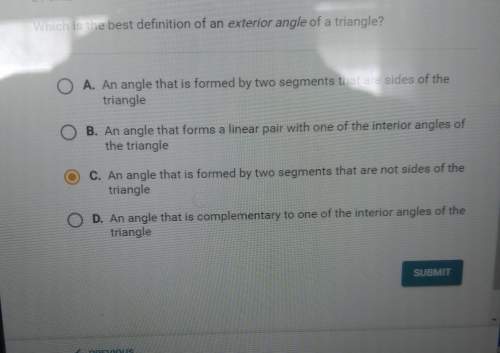
Mathematics, 09.04.2021 04:00 7obadiah
Et A = (2, 4), B = (4, 5), and C = (6, 1). Draw three new triangles as follows:
PQR has P = (11, 1), Q = (10, -1), and R = (6, 1);
∆ KLM has K = (8, 10), L = (7, 8), and M = (11, 6);
∆ TUV has T = (-2, 6), U = (0, 5), and V = (2, 9).
These triangles are not obtained from ABC by applying a vector translation. Instead, each of the appropriate transformations is described by one of the suggestive names reflection, rotation, or glide-reflection. Decide which is which and explain your answers.

Answers: 3


Another question on Mathematics


Mathematics, 21.06.2019 17:30
One integer is 8 times another. if the product is 72, then find the integers
Answers: 2

Mathematics, 21.06.2019 18:30
Which equation represents the model shown? a)1/3 divide 1/6 = 2 b)2/3 divide 1/6 = 2/18 c)1/3 divide 1/6 = 1/18 d)2/3 divide 1/6 =4
Answers: 1

You know the right answer?
Et A = (2, 4), B = (4, 5), and C = (6, 1). Draw three new triangles as follows:
PQR has P = (11, 1)...
Questions



Mathematics, 13.01.2021 18:10

Chemistry, 13.01.2021 18:10





Mathematics, 13.01.2021 18:10

Mathematics, 13.01.2021 18:10

History, 13.01.2021 18:10


English, 13.01.2021 18:10

Mathematics, 13.01.2021 18:10


Mathematics, 13.01.2021 18:10

Mathematics, 13.01.2021 18:10


Computers and Technology, 13.01.2021 18:10

Mathematics, 13.01.2021 18:10




